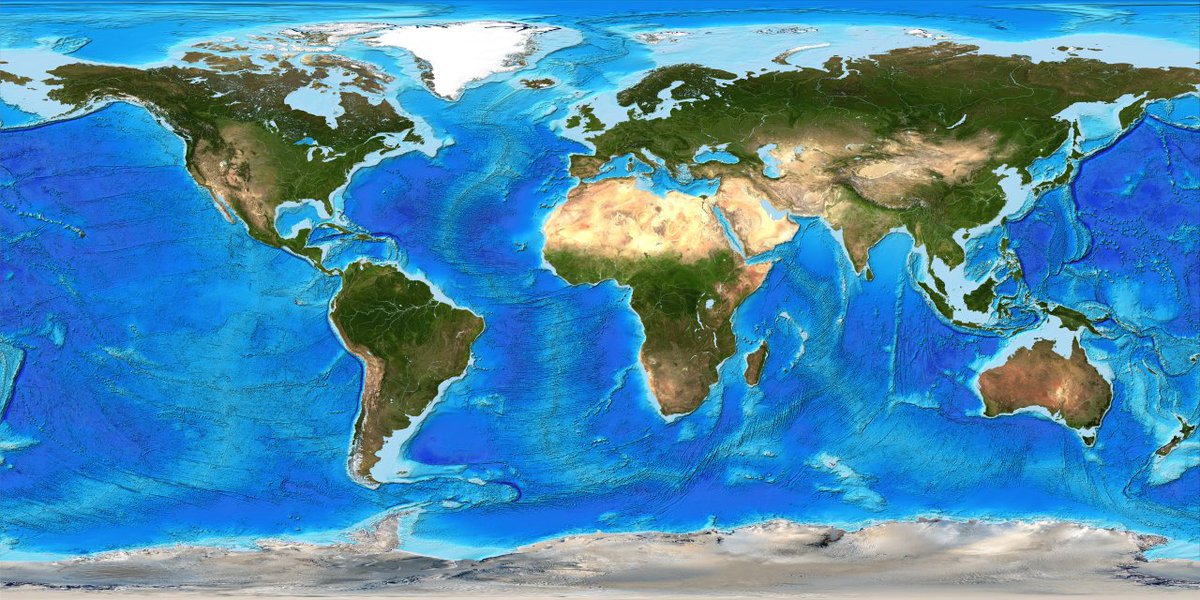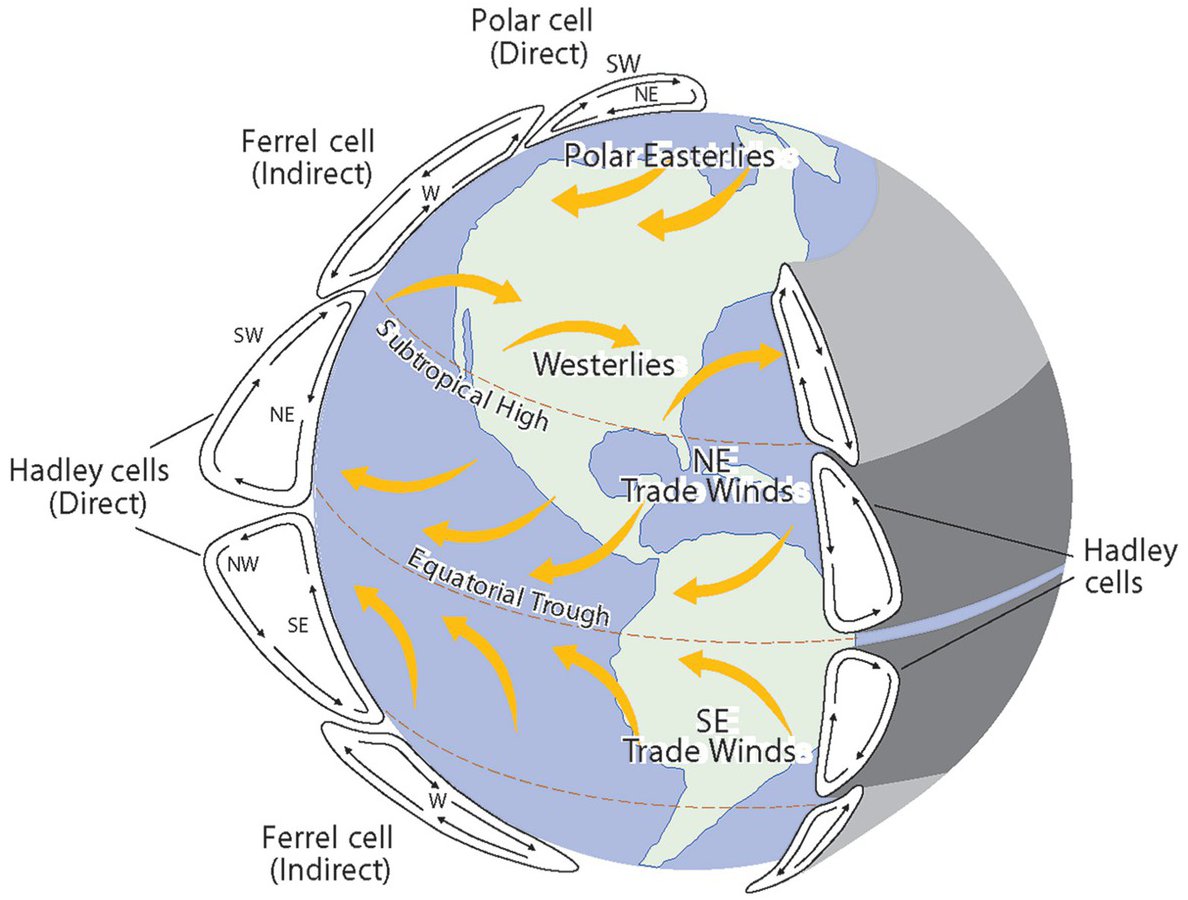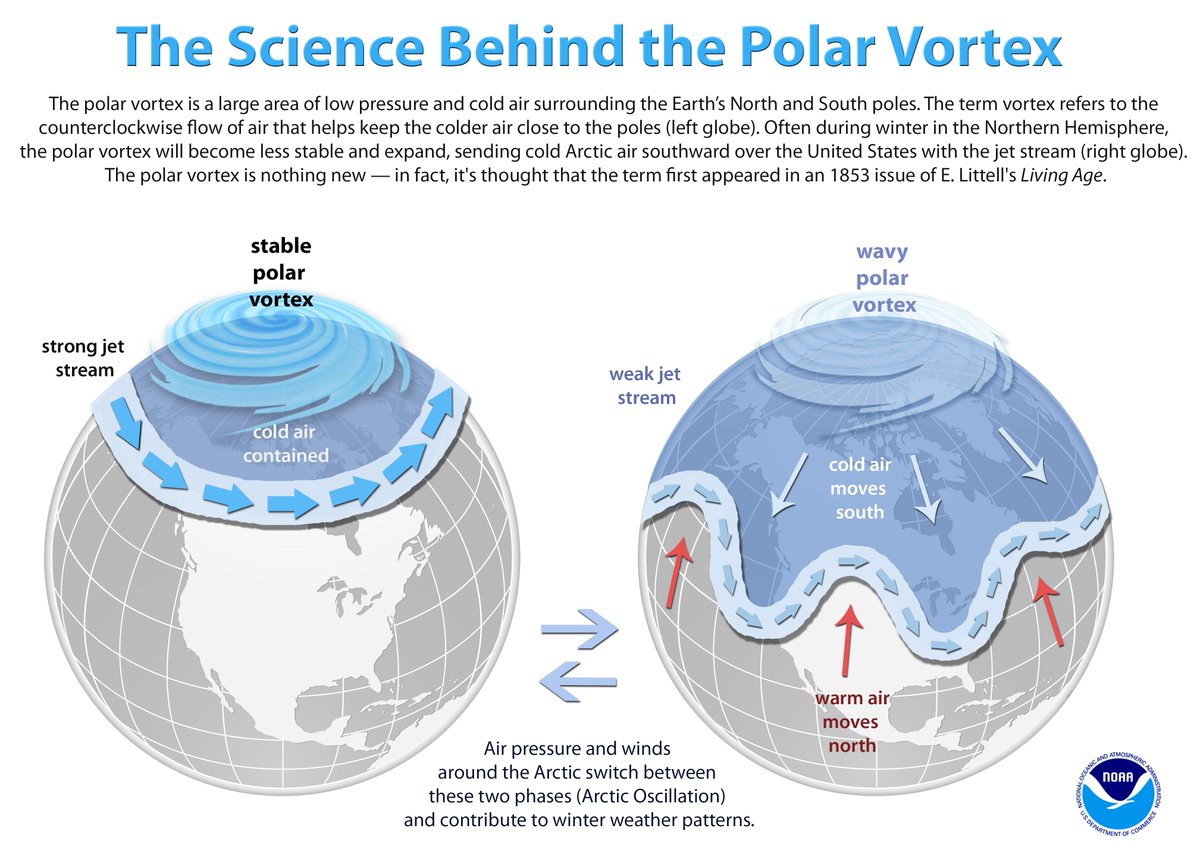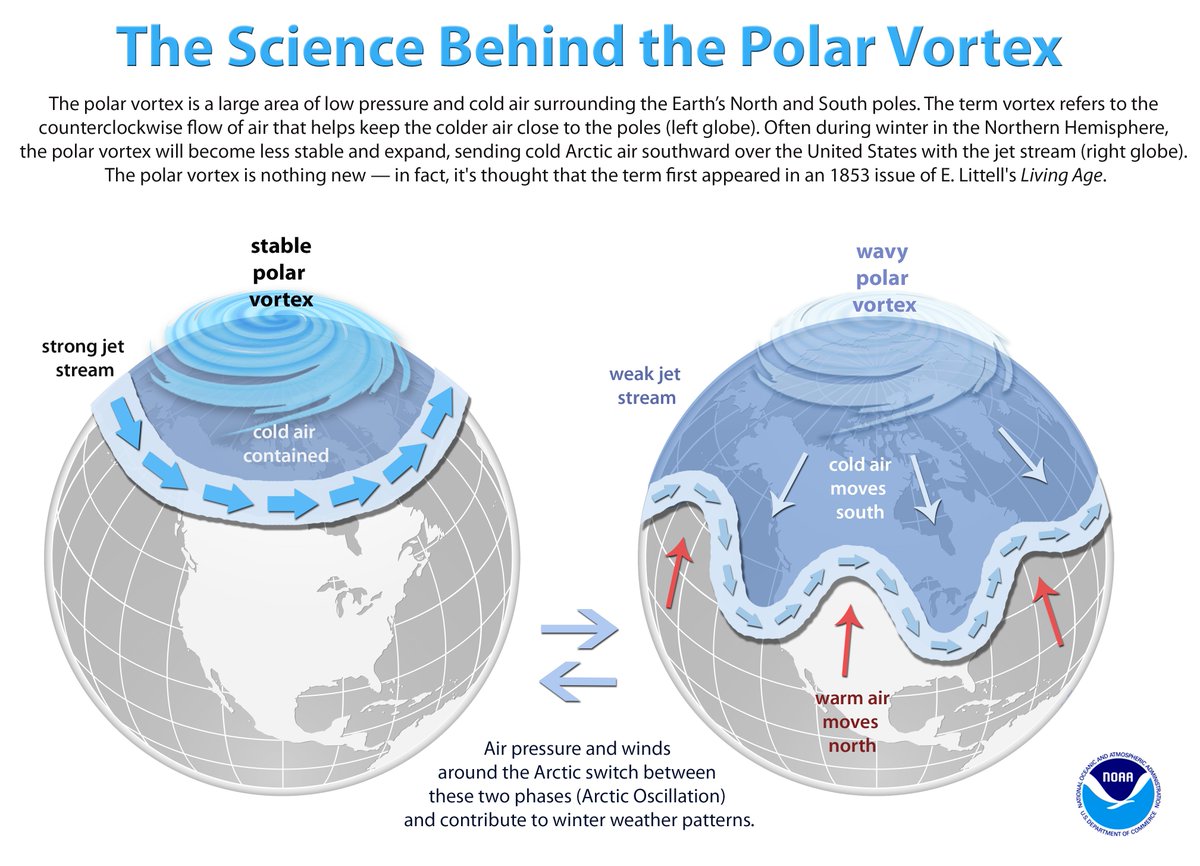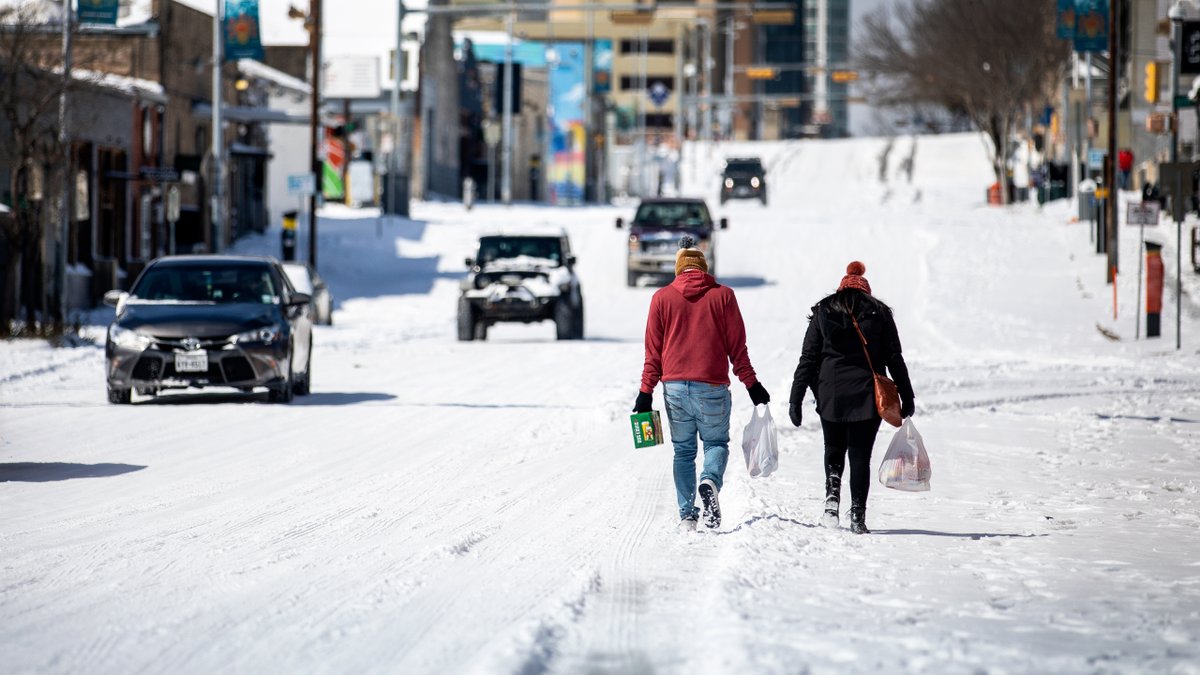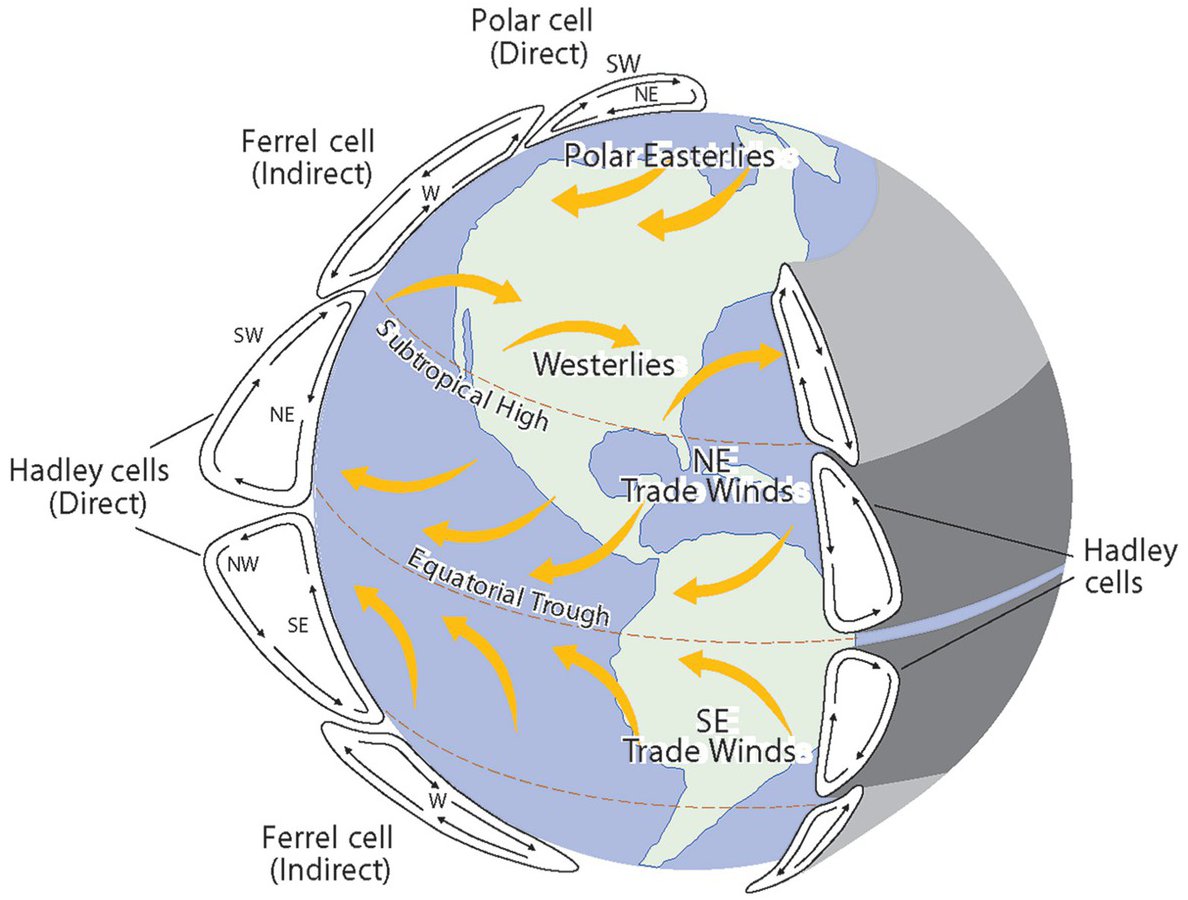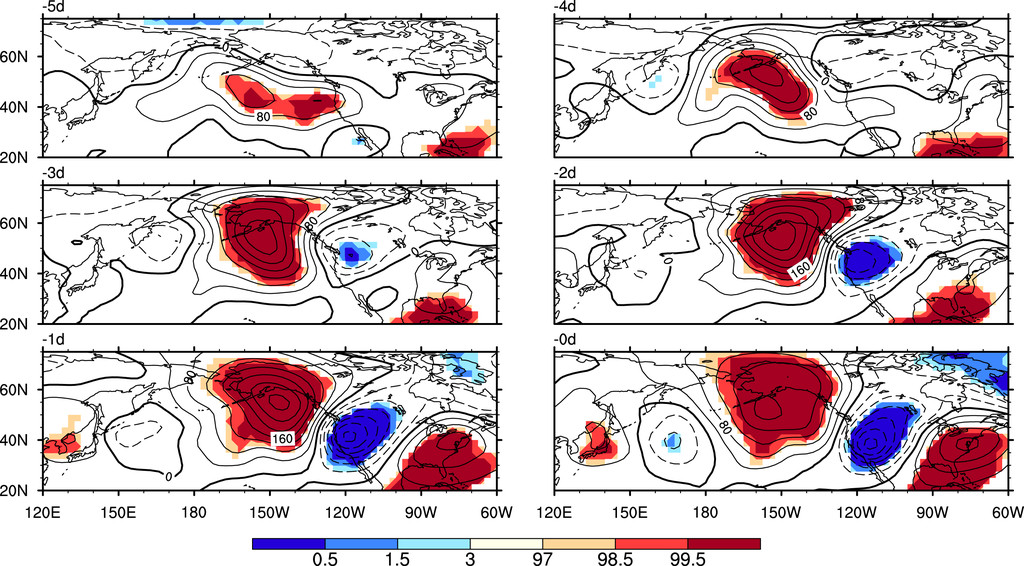PSA: Relatively low-latitude, even sub-tropical, locations in central & eastern portions (but less frequently western portions) of continents can occasionally experience severe winter cold spells--like Texas is currently enduring. But how, & why this longitudinal asymmetry?(1/17)
Well, water has a tremendous ability to buffer against thermal extremes. This is because H20 has high heat capacity--around 4x that of land! This means that it takes around 4 times as much energy to raise the temperature of a given mass of water the same amount as land. (2/17)
An intuitive consequence is that regions near large bodies of water are usually milder than landlocked areas at a similar latitude. This is also why dry places have much larger diurnal temperature ranges than humid places. (3/17)
But that's not the whole story! The rest boils down to several basic tenets of physical climatology. First, winds in mid-latitude regions generally blow from west to east (the "prevailing westerlies"). This brings relatively moist & mild "maritime" climates to west coasts. (4/17)
Second, and less intuitively, these prevailing west to east winds do an especially good job protecting west coasts from outbreaks of extremely cold winter air. This is because the ultimate source region of extremely cold air in the northern hemisphere is...the Arctic. (5/17)
This is where the #PolarVortex comes in. The PV is actually a semi-permanent climate feature, and is not new: for most of the winter, this ring of westerly winds keeps frigid Arctic air largely "fenced in" across the high latitudes. (6/17)
But occasionally, the #PolarVortex vortex becomes temporarily destabilized--allowing westerly winds to become more latitudinally oriented & resulting in a "wavy" jet stream pattern. Pockets of extremely cold Arctic air can escape & reach very low latitudes. (7/17)
An especially extreme iteration of this process, in fact, exactly what's happening right now--leading to chaos and dangerous societal disruptions in Texas. #TXwx (8/17)
But why does, say, California, never experience such dramatic cold extremes? Houston is south of San Diego, after all! Well, it all has to do with those westerly prevailing winds I mentioned above. #CAwx (9/17)
Arctic air destined for California (and most west coast continental areas) usually has to cross over a substantial expanse of the ocean before arriving from the northwest--and the high heat capacity of that ocean water greatly moderates the cold air long before arrival. (10/17)
Over the continental interiors, however, there is no such protection--frigid Arctic air can flow directly from north
to south without passing over any large bodies of water--arriving largely unmoderated by its overland trajectory. (11/17)
to south without passing over any large bodies of water--arriving largely unmoderated by its overland trajectory. (11/17)
Because prevailing winds are from the west, this means that
even *coastal* areas on continental eastern or even southern sides of continents can occasionally experience severe cold outbreaks (think U.S. Gulf Coast, southern/eastern Mediterranean, & SE China/Japan). (12/17)
even *coastal* areas on continental eastern or even southern sides of continents can occasionally experience severe cold outbreaks (think U.S. Gulf Coast, southern/eastern Mediterranean, & SE China/Japan). (12/17)
What does it take to get an extreme cold outbreak in California? A complete breakdown of westerly flow--& even a *reversal* to weak easterly flow (caused by upstream blocking high pressure) that allows cold continental air to spill westward. This occurs very rarely. #CAwx (13/17)
Finally, since this claim is showing up a lot in news stories right now: Is #ClimateChange increasing the likelihood of extreme winter cold air outbreaks across the northern hemisphere continental interiors? The short answer: we don't know yet, but we're working on it. (14/17)
This specific question has been the subject of intense study over past decade, & answers thus far have been...conflicting, and dependent on specific tools & metrics used. Right now, there is some evidence in favor of a link, but also substantial evidence against. (15/17)
There are certain extreme weather processes that now have very clear links to climate change, as my colleagues and I have discussed extensively in the past. I would argue that the Arctic/mid-latitude question is not yet once of them. (17/x) https://twitter.com/Weather_West/status/1274007004072210433?s=20
For a much more comprehensive discussion on the climate change question, I think this @CarbonBrief article from 2019 remains an excellent primer on the topic, & includes perspectives from many scientists directly involved in underlying research. (17/17) https://www.carbonbrief.org/qa-how-is-arctic-warming-linked-to-polar-vortext-other-extreme-weather

 Read on Twitter
Read on Twitter